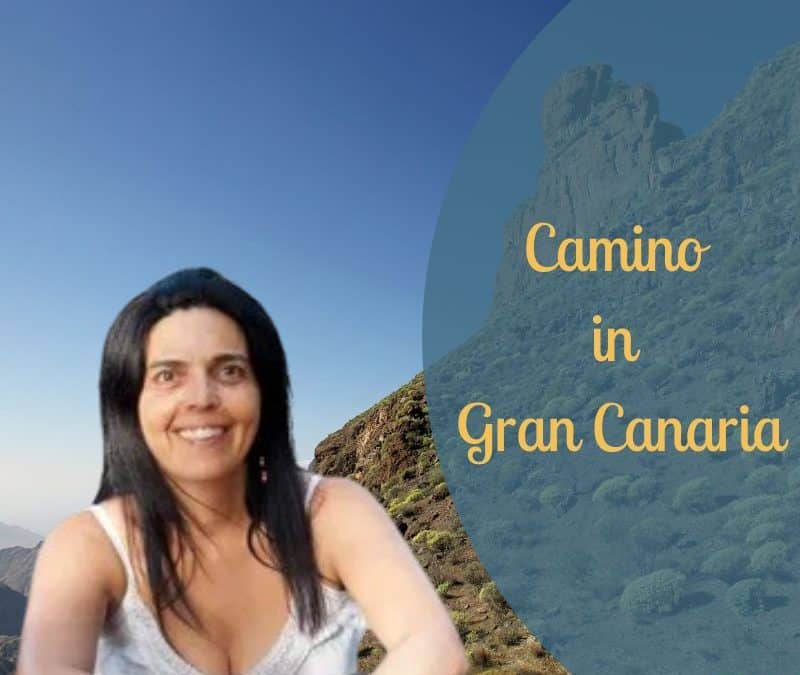
Asturias and the Camino with Diego
Spanish teacher Diego Villanueva, from Fluent Spanish Express walked the Camino and he joined me in the podcast to talk about his experience and Asturias, the region he’s from.
Diego embarked on the Camino Primitivo, the oldest route to Santiago, starting from his hometown of Oviedo, in 2018. This decision came at a crucial point in his life, just after he had resigned from a banking job and before embarking on a new career in teaching Spanish.
You can listen to our conversation, in Spanish, in the podcast. Or you can continue reading about it in English.
Diego’s Camino
Diego, like many of us who grew up in towns along one of the Caminos, wasn’t really aware of the Camino for a long time. When he first started seeing shells on the streets, showing the way, he had no idea what those shells meant until he eventually started seeing pilgrims in his hometown.
Then he knew. But he still had no plans to walk the Camino. A few years later, Diego needed a career change. His banking job didn’t make him happy and he decided to resign. He wanted to become a Spanish teacher, but he didn’t want to start his new career straightaway. He needed time. He needed space to reflect and heal.
Diego had been toying with the idea of walking the Camino for a few days when he met some friends for a drink. Right there and then he made a decision and announced it to his friends:
I’m going to start walking the Camino tomorrow.
And that’s what he did. He started walking the next day.
He didn’t plan or train, although he was (and is) an avid walker.
Diego is from Oviedo, and he was living in Oviedo at the time, so he chose the Camino Primitivo. Apart from being able to start from home, this route also gave him solitude and time for introspection he was looking for. In fact, Diego didn’t enjoy the final stages, after the Primitivo joins the Francés, because it was more crowded and he needed something else.
Diego’s decision to walk the Camino alone was deliberate. However, the journey was far from lonely. He met fellow pilgrims from around the globe, each carrying their own stories and reasons for undertaking the pilgrimage. These shared moments and listening to their stories was one of the highlights of Diego’s Camino.
He walked through parts of Asturias he already knew, but being on the Camino gave him a new perspective. One thing that stands out in Diego’s mind is the warmth of the local villagers in Asturias towards pilgrims. They who would ask if you need something, offer water, a place to rest…
Future Caminos?
After his first experience in 2018, Diego was planning his second Camino for 2020. But, like so many others, he had to change his plans. He hasn’t been back yet, but he’d love to. Diego now lives in a town on the Camino del Norte, still in Asturias, and would love to walk that route next. He would like to do the next one differently too: with company, rather than by himself.
But there’s one change in his life that makes planning his next Camino a little harder: he’s now the owner of a little dog. He would have to carry his dog most of the way, as she’s not a keen walker. And then there are all the other added difficulties, like finding accommodation. But he would definitely love to walk the Camino again, and not just the Norte route, but all the rest too!
Diego’s recommendations
Whether you’re starting in Oviedo or switching from the Camino del Norte, you should take some time to explore Asturias’ capital. It’s well worth a visit. Diego also suggests going to the nearby Alto del Naranco, a mountain with amazing views.
The 2nd and 3rd biggest cities in Asturias are Gijón and Avilés, both on the Camino del Norte. If you can, spend some time exploring them too. There is loads to see.
And if you like good food, Asturias won’t disappoint: fabada asturiana, a hearty bean stew; cachopo, 2 breaded veal steaks stuffed with ham and cheese; and frisuelos, a sweet treat are some of Asturias typical dishes.
Do like Diego and treat yourself to a good meal after your walk every day.
Want more?
Make sure you don’t miss any posts or announcements by subscribing for free here. That way, when a new post is out, you will get it in your inbox. And… you get access to exclusive content too.






